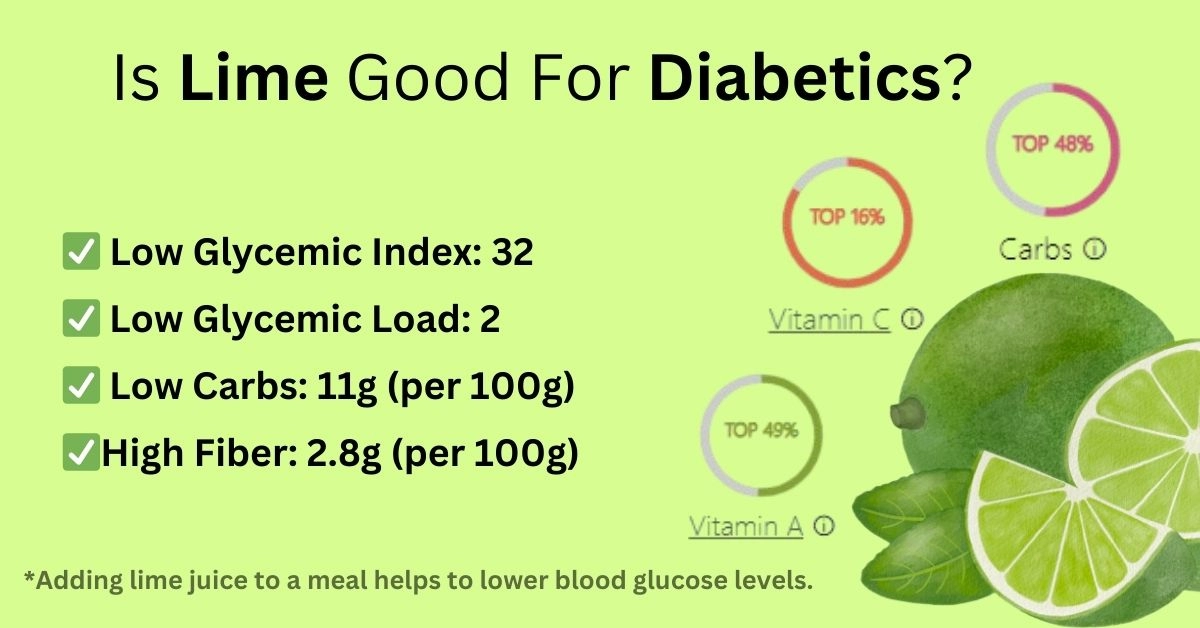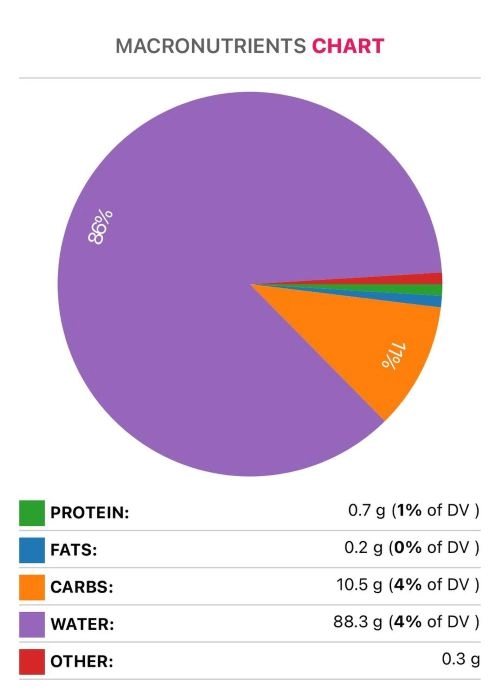Lime and Diabetes - Are They Good For Diabetics

Introduction
Limes are packed full of vitamin C, have an intense flavor, and contain citric acid and potent antioxidants. We'll talk about how lime can affect your blood sugar levels and their benefits for those who have diabetes.
Glycemic Index and Carbohydrates
To measure the glycemic index value of lime, a 100g serving or nearly 2 average serving sizes of lime would have to be consumed. Thus, the glycemic index of lime has not yet been calculated due to the difficulty of consuming enough of this sour fruit in one sitting.
However, you can find the glycemic index values of over 600 other foods on our Glycemic index chart page.
The carbs content of lime is relatively low; it contains 10.54g per 100g (of which 2.8g is fiber and 7.74g is net carbs) or 7g per average serving (67g).
The glycemic index of lime is 32 due to relatively low net carb and high dietary fiber contents per serving.

Type-2 Diabetes
Limes are among the top 28% of foods as a source of dietary fiber. A high intake of fiber can benefit people with diabetes by helping keep blood sugar levels under control. Fiber slows digestion and gives sugars more time to break down, improving glycemic control.
Lime is high in antioxidants, such as Vitamin C and flavonoids, which can prevent some harmful chemical reactions in your body.
The addition of lime juice to a meal has been researched to reduce the mean blood glucose concentration (1).
This effect is thought to be caused by lime juice's acidity, which slows starch digestion. Several other studies have found lime to be a source of a functional compound that can help improve diabetes mellitus control due to its hypoglycemic effects (2, 3).
Metformin is used to control high blood sugar. Lime is high in antioxidants, such as naringin which has similar beneficial effects as the medication metformin (1).
One study indicates that pectin, another antioxidant found in limes, has anti-diabetic effects, including improved glucose tolerance and blood lipid levels and reduced insulin resistance (4).
In summary, limes might help prevent diabetes due to their potent antioxidants.
